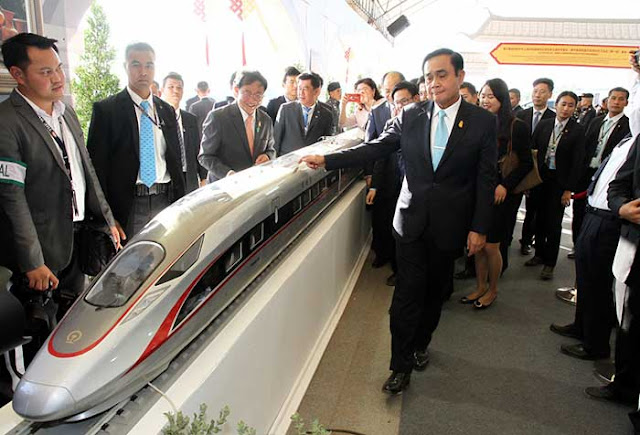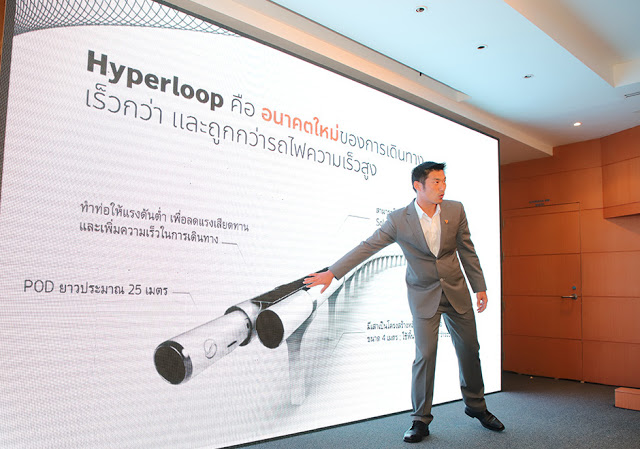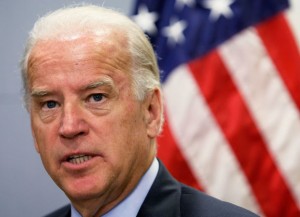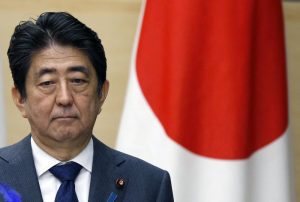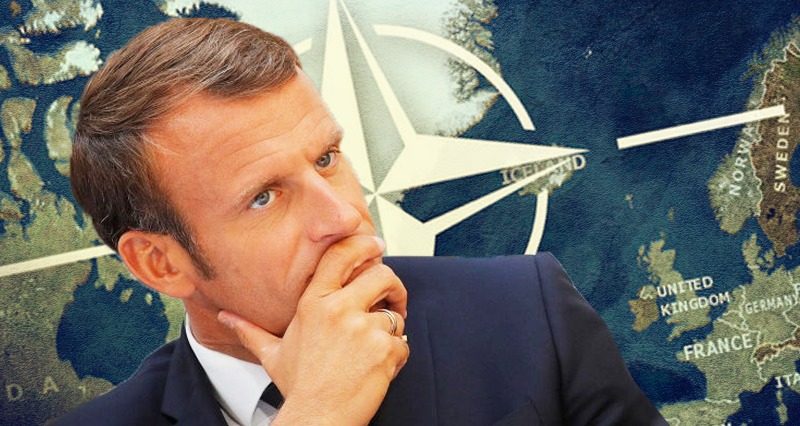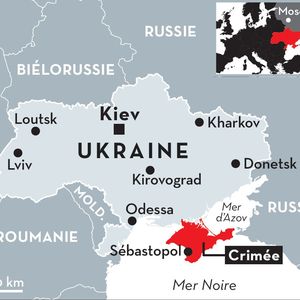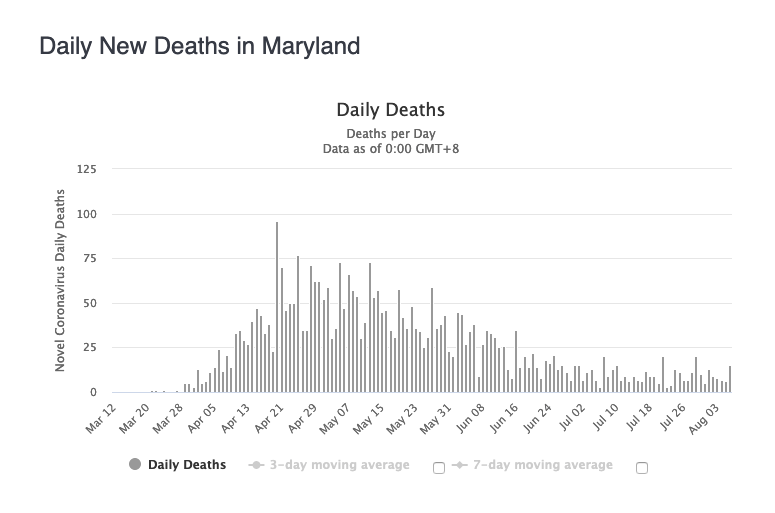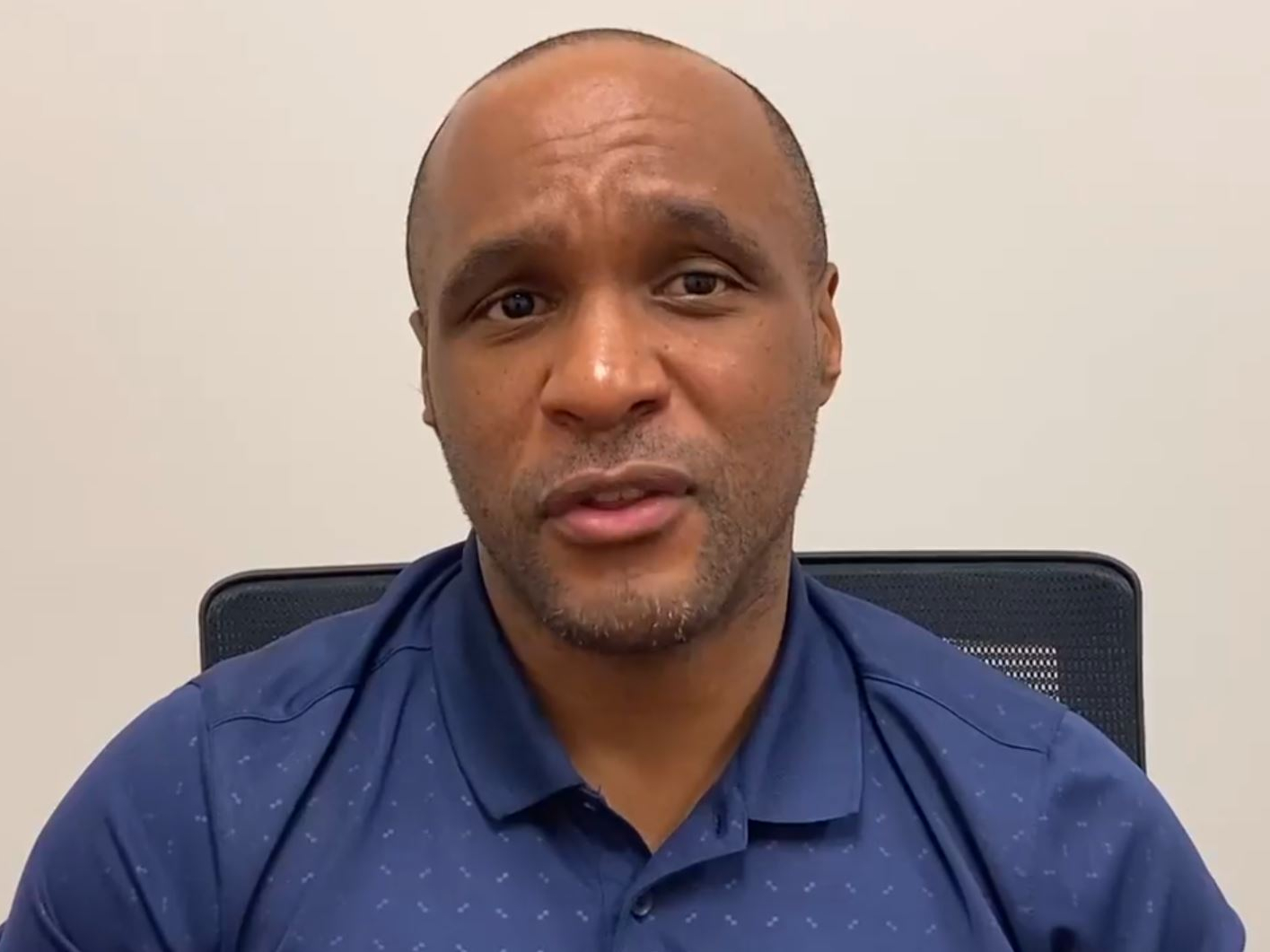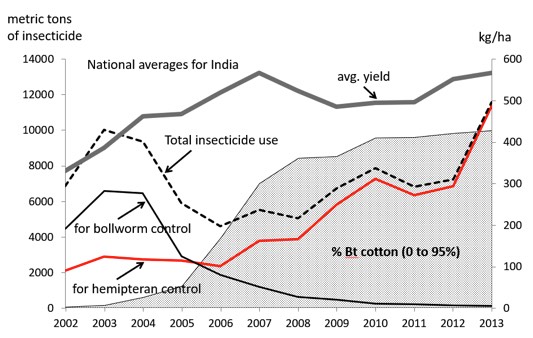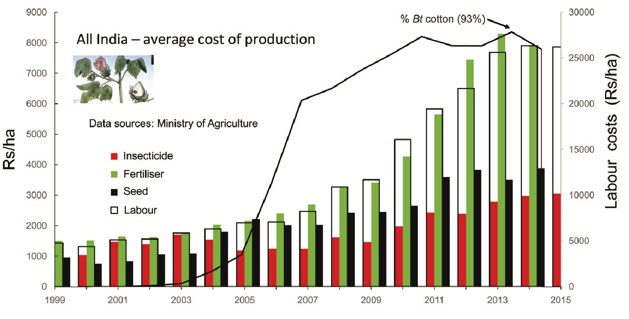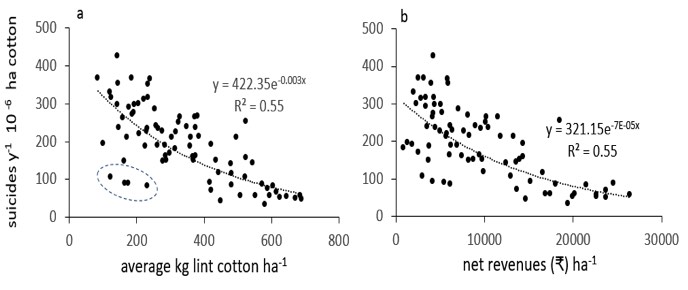On July 12 an organization called Health Feedback posted a review of my and Patrick Corbett’s July 2 OffGuardian article on the bombshell revelations of Bulgarian Pathology Association President Dr. Stoian Alexov. They stamped it “inaccurate.”
This article is a refutation of Health Feedback’s so-called fact-checking. I show why Dr. Alexov’s statements, in fact, fit the evidence, and punch plenty of other holes in Health Feedback’s claim that our article is “clearly wrong” and has “very little credibility.”
Health Feedback’s review is fatally faulty right off the top, when the review’s unnamed author mistakes my co-author Patrick Corbett for James Corbett of The Corbett Report: the screencap at the top of the review is from James Corbett’s June 16 interview with me.
The review also takes a swipe at outlets that reposted our article: it notes Media Bias/Fact Check dubbs GlobalResearch.ca and Australian National Review “conspiracy websites.”
But Media Bias/Fact Check has long been launching bogus attacks. And in addition, the Media Bias/Fact Check website says it has “chosen the IFCN [International Fact Checking Network] as our standard fact-checkers because they all abide by the same rules. This is important, as the standards are high.”
Note, however, that IFCN is funded by the likes of the Bill & Melinda Gates Foundation (see below).
By the way, there’s at least one other article claiming to debunk our piece: a July 8 article by Lead Stories. Facebook uses the Lead Stories review to try to block people from reading our July 2 piece. I focus on Health Feedback’s review here because it’s more detailed and covers the same ground as the Lead Stories piece.
I’ll just mention a couple of things about Lead Stories. First, it belongs to the IFCN (still more on the IFCN very shortly). And when Lead Stories’ co-founder and editor-in-chief Alan Duke and his buddy Perry Sanders started the company in 2015, Duke was ending his long career with CNN – which isn’t exactly known for its factual reporting. And Duke shows his blatant bias when, in this article on Lead Stories, he blames COVID-19 deaths on people who don’t wear masks or social distance, and says “misinformation can be deadly.”
Let’s now take a quick peek under the hood of Health Feedback. It bills itself as a “non-partisan, non-profit organization dedicated to science education.”
Its advisors include nuclear-power booster and MIT professor Dr. Kerry Emanuel. Another advisor is Thomas Malone, who’s listed as a founding director of the Center for Collective Intelligence.
The Center is funded by, among others, Wall Street giant JP Morgan and pharma company Takeda. Takeda is developing antibody-based therapies against COVID-19.
Health Feedback’s parent organization is Science Feedback, which claims to be “non-partisan.”
Science Feedback apparently is “certified through the non-partisan” IFCN and joined Facebook’s “fact-checking program” in April 2019.
At 21:57 in the video, and in this link in the show notes, of The Corbett Report’s June 19 podcast episode exposing the glaring conflicts of interest in the fact-checking industry, host James Corbett reveals that IFCN’s major funders include George Soros-backed organizations and the Bill & Melinda Gates Foundation.
Also, Health Feedback is a member of the World Health Organization (WHO)-led project called Vaccine Safety Net. It “provides scientifically based information on vaccine safety” to counter “unbalanced, misleading and alarming vaccine-safety information.”
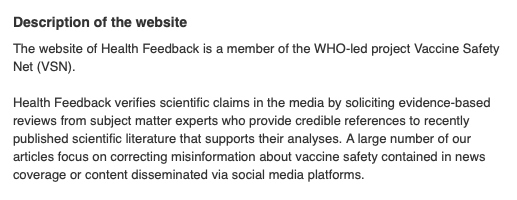
Screenshot from WHO
Its Advisory Group members range from Cherstyn Hurley, Immunisation Publications Manager for Public Health in England, to Catharina de Kat, a member of the WHO’s team that answers media inquiries regarding COVID-19, to Dr. Jane Gidudu, Vaccine Safety Officer at the Global Immunization Division of the US Centers for Disease Control and Prevention (CDC).
The WHO is a public-private partnership, with the Bill and Melinda Gates Foundation being a very major funder and large vaccine manufacturers also providing large contributions.
[Note: If Donald Trump does pull the US out of WHO, the Gates Foundation will be their biggest single financial supporter – ed.]
This is just one of the many ways Gates’s strategic contributions give him and big pharma the global leverage to push vaccines, antibodies and anti-virals on billions of people in the pursuit of profit.
While we’re following the money, note that AstraZeneca sponsored the May 8 European Society of Pathology (ESP) webinar that’s the subject of the May 13 interview of Dr. Alexov that was the focus of our July 2 article.
AstraZeneca is one of the biggest players jockeying for the lead in developing and selling vaccines against COVID-19.
Also, the company will not have financial responsibility in many countries for injuries and deaths from the vaccine it’s developing against COVID-19 — and which it’ll deliver billions of doses of, starting as early as December, without having to first show the vaccine is safe or effective.
This indemnity reportedly is being granted because the company, which is the UK’s second-largest pharmaceutical firm, “cannot take the risk” of compensating people for the “side effects” they experience from the vaccine.
Among the major backers of the AstraZeneca vaccine are the US government, the UK government, and the Bill & Melinda Gates Foundation’s Coalition for Epidemic Preparedness Innovations and Gavi, the Vaccine Alliance.
Therefore it’s plausible that the company, possibly joined by other powerful players, pushed the ESP leaders to distance themselves from Dr. Alexov’s revelations. (A statement by ESP leaders attempting to disprove Dr. Alexov’s assertions is included in the review; in the error list below I show evidence, including quotes from ESP President Dr. Holger Moch, that Dr. Alexov is correct.)
AstraZeneca also funded the ESP’s June 25 webinar that I discuss below. Furthermore, it was one of the three top funders of the ESP’s annual meeting, known as the European Congress of Pathology, in 2019. And it was a major sponsor of the 2018 congress.
Without further ado, here’s the list of errors Health Feedback made in its so-called ‘fact check’ of the main eight ‘claims’ Patrick Corbett and I made in our July 2 article.
ERROR #1 – CLAIM 1
In the section on Claim 1, the Health Feedback review states that Dr. Alexov made the revelations described in our article “during a [May 8] webinar organized by the European Society of Pathology.”
Health Feedback repeats and extends this falsehood a few sentences later: Dr. “Alexov made his remarks at a ‘consensus of participants’ during the ESP webinar – with the implication that his comments were accepted as part of the scientific or medical consensus.”
We, in fact, wrote that Dr. Alexov made his revelations in a May 13 interview (bolding added for emphasis):
Dr. Alexov made his jaw-dropping observations in a video interview summarizing the consensus of participants in a May 8, 2020, European Society of Pathology (ESP) webinar on COVID-19.
The May 13 video interview of Dr. Alexov was conducted by Dr. Stoycho Katsarov, chair of the Center for Protection of Citizens’ Rights in Sofia and a former Bulgarian deputy minister of health. The video is on the BPA [Bulgarian Pathology Association]’s website, which also highlights some of Dr. Alexov’s main points.”
ERROR #2 – CLAIM 2
The section on Claim 2 in the review states that it’s false that no monoclonal antibodies for the novel coronavirus exist.
In our article we wrote that:
Among the major bombshells Dr. Alexov dropped is that the leaders of the May 8 ESP webinar said no novel-coronavirus-specific antibodies have been found.”
The review article asserts that:
This is false. Several published studies report the discovery of antibodies that bind specifically to SARS-CoV-2, the causative agent of COVID-19, as well as antibodies against SARS-CoV-2 in people who had been previously infected[1-4].”
The review also cites another study to try to bolster their position that there are novel-coronavirus-specific monoclonal antibodies (Reference 10, which they cite in the section of the review on Claim 4).
Health Feedback also obtained a statement from ESP President Dr. Holger Moch, ESP Director-General Dr. Raed Al-Dieri and ESP Secretary Dr. Aurelio Ariza. The ESP officials write that their statement summarizes the official position of the ESP, “which is not responsible for the claims and opinions of its individual members.”
The ESP trio’s statement addresses monoclonal antibodies and detection of the virus by saying:
Monoclonal antibodies able to identify different components of the novel coronavirus (SARS-CoV-2) are certainly available. They are used by pathologists to demonstrate the presence of the virus in body tissues with immunohistochemistry and immunofluorescence studies.
“Other techniques (such as in situ hybridization and RT-PCR [reverse-transcriptase polymerase chain reaction) can detect viral RNA in tissues. Additionally, electron microscopy neatly allows the visualization of the spike-crowned virus (hence the name coronavirus) in the diseased organs.
“Coronavirus images as observed by pathologists in human tissues may be seen in the articles by M. Ackerman [sic] et al. (NEJM 2020)[6], I. Colmenero et al. (Brit J Dermatol 2020)[7], V.G. Puelles et al. (NEJM 2020)[8] and Z. Varga et al. (Lancet 2020)[9], among others.
In this section we’ll deal with the assertions about monoclonal antibodies by Health Feedback and the ESP officials. In the section on Error #4 below we’ll address their claims that pathologists have detected viral RNA in tissues and have used electron microscopy to visualize the virus.
If they’re correct and the novel coronavirus in fact has been found and is the causative agent of the deaths attributed to COVID-19, there should be monoclonal antibodies that are specific to it and only to it.
That’s because SARS-CoV-2 supposedly is distinct from every other virus, including its cousin SARS-CoV. So monoclonal antibodies used to detect the novel coronavirus should be specific to only the novel coronavirus.
But none of the five references cited by Health Feedback – References 1-4 and Reference 10 – prove the existence of such monoclonal antibodies.
One of the papers (Reference 4) doesn’t even mention monoclonal antibodies. Three of the others (References 1, 2 and 10) involve monoclonal antibodies to SARS-CoV rather than to SARS-CoV-2. And the fourth (Reference 3) uses two antibody tests, but neither has been shown to be specific to the novel coronavirus — or even to be accurate at all.
Also, the five papers’ authors also don’t provide any other objective verification that the novel coronavirus truly is present.
The details of my examination of those five references are in Appendix One.
During a June 25 ESP webinar, Dr. Zsuzsanna Varga, a senior attending physician in the University Hospital of Zurich’s Institute of Pathology and Molecular Pathology which Dr. Moch heads, gave a presentation on the methods to detect the virus in autopsy tissue.
She said (at 13:19 in the video of her presentation), in discussing a paper claiming to detect the novel coronavirus using among other methods monoclonal antibodies via immunohistochemistry and immunofluorescence (which as it turns out is Reference 10 in the Health Feedback review), that few if any groups have been able to replicate these findings:
The problem that I see at the moment is that many pathology institutions face unspecific background stain and unspecific stains,” said Dr. Varga “…. We tried several clones [monoclonal antibodies] to get such nice and reliable signals [as the paper’s authors] [but] we are at the moment not at that step where we can say we have a good antibody and we have reliable signals.”
The details of this are in Appendix Two’s section on Reference 8. And I discuss Dr. Varga’s presentation some more in the section on Error #4 below.
Another problem with the assertion that monoclonal antibodies for the novel coronavirus have been produced is that none of them appear to have undergone objective and thorough antibody validation.
In this article providing a framework for robust antibody validation the authors state that “for commercially available antibodies, it is clear that what is on the label does not necessarily correspond to what is in the tube.”
The authors also emphasize that “for antibodies, one must demonstrate that they are specific, selective, and reproducible in the context for which they are used.”
And by the way, in case you haven’t guessed, the sale of monoclonal antibodies is highly profitable. It’s so lucrative they comprise the majority of the biopharmaceutical market. See for example this articleand this paper on the booming monoclonal-antibody business.
ERROR #3 – CLAIM 3
The review asserts that Patrick Corbett and I were inaccurate in the way we described monoclonal antibodies.
This was our description:
The body forms antibodies specific to pathogens it encounters. These specific antibodies are known as monoclonal antibodies and are a key tool in pathology.”
The review points out that in fact the body produces what are known as ‘polyclonal antibodies.’ These are an array of antibodies that differ from each other. They state that polyclonal antibodies are used for the production of monoclonal antibodies, and that this can only be done in laboratories, via cloning of cells that produce specific antibodies.
I concede that our description could have been clearer. But the essence of our description is accurate.
As I wrote on July 6 in the comments section of our article:
what Dr. Alexov is saying and what we’re explaining is that mAbs [monoclonal antibodies] are necessary for verifying the presence of pathogens in tissue and that no such mAbs exist for the novel coronavirus. Obviously that’s because there have not been any antibodies found that are highly specific to the novel coronavirus; these are needed to produce mAbs.”
ERROR #4 – CLAIM 4
Health Feedback refutes the statement in our article that, because no monoclonal antibodies to SARS-CoV-2 have been identified to date, pathologists can’t verify whether the virus is present in the body and whether the disease or diseases attributed to the virus truly were caused by it.
In an attempt to show that our statement is wrong, Health Feedback cites this part of the ESP leaders’ statement:
Monoclonal antibodies able to identify different components of the novel coronavirus (SARS-CoV-2) are certainly available. They are used by pathologists to demonstrate the presence of the virus in body tissues with immunohistochemistry and immunofluorescence studies.”
We dealt with this in Error #2, above.
They also refer to another part of the ESP leaders’ statement:
Other techniques (such as in situ hybridization and RT-PCR [polymerase chain reaction]) can detect viral RNA in tissues. Additionally, electron microscopy neatly allows the visualization of the spike-crowned virus (hence the name coronavirus) in the diseased organs.
“Coronavirus images as observed by pathologists in human tissues may be seen in the articles by M. Ackerman et al. (NEJM 2020)[6], I. Colmenero et al. (Brit J Dermatol 2020)[7], V.G. Puelles et al. (NEJM 2020)[8] and Z. Varga et al. (Lancet 2020)[9], among others.
In Error #2 above I addressed the assertions about the monoclonal antibodies. In this section I’ll address whether the virus in fact has been visualized.
I carefully examined References 6 to 9 cited in the ESP statement. I found that none of them can truly claim to describe the imaging of the novel coronavirus. Appendix Two gives the details of my findings.
On top of that, Dr. Moch himself has cast doubt on whether the novel coronavirus has been imaged in autopsy tissues of people said to have died of the novel coronavirus.
At 6:58 in the first of the six publicly viewable videos from the May 8 ESP webinar — in talking about “viral-like particles” shown in an electron-microscopy figure accompanying a Lancet Respiratory Medicine paper — he says that while many researchers claim to have imaged the novel coronavirus:
at the moment it is relatively controversial if [whether] these are true viral particles.”
The Health Feedback article also states, “the ESP webinar that the article refers to included a specific session dedicated to methods for detecting SARS-CoV-2 in human tissue. This session showed that pathologists are using a variety of techniques to determine whether a person was infected with SARS-CoV-2, including molecular techniques such as in situ hybridization (ISH).”
They’ve made another error there – the ESP webinar they’re referring to took place on June 25; it isn’t the May 8 ESP webinar that we discussed in our article on Dr. Alexov.
And as I mentioned in Error #2 above, in that June 25 ESP webinar Dr. Varga does discuss methods for detecting SARS-CoV-2 in autopsy tissues.
However, she concludes, when discussing a paper she and Dr. Moch co-authored along with other papers published to date on electron-microscope images that claim to show viral particles (and which is Reference 9 in the Health Feedback review), that visualizing the virus, via electron microscopy is:
demanding [and] time-consuming, and searching for virus takes sometimes several hours.”
Dr. Varga also notes that it requires a lot of expertise, because other structures and fixation artefacts can be mistaken for viral particles. The latter are distortions created during the processing of tissue sections for examination.
She suggests that, to be sure whether the viral particles are present in autopsy tissue, further study is needed with immune electron microscopy, which is even more painstaking – and expensive – technique.
(See Appendix Two for more on these quotes and other information on imaging viral particles, PCR, in situ hybridization, and visualizing the virus’s RNA and protein.)
Note also that Torsten Englebrecht and Konstantin Demeter asked teams of scientists who had claimed to have purified and sequenced the novel coronavirus whether the electron micrographs in their published findings showed purified viruses.
The scientists’ responses were essentially “No.”
The pair reported this in a June 27 Off-Guardian article. (I note this also in the section on Error #5, below.)
It’s striking that a virus which is supposedly a constant threat to all of us and overwhelms the bodies of hundreds of thousands of its victims is so extremely elusive. It should be easy to detect the virus in autopsy tissue, particularly the target tissue of the lungs, because viruses replicate until they’re present in large enough quantities to kill a person.
Based on all the evidence, the only logical conclusion is that it’s very uncertain whether these “viral particles” are the novel coronavirus.
ERROR #5 – CLAIM 5
The review also states that our claim is false that “novel coronavirus has not fulfilled Koch’s postulates.”
I stand by my and Amory Devereux’s June 9 Off-Guardian article in which we demonstrate that the novel coronavirus has not fulfilled Koch’s postulates.
I also stand by Torsten Englebrecht and Konstantin Demeter. As I mention in the section on Error #4 above, the duo asked scientists who had claimed to have purified and sequenced the novel coronavirus whether the electron micrographs in their published findings indeed showed purified viruses. The scientists’ responses indicated that they did not show this.
And oddly, the Health Feedback review first asserts that the Koch’s postulates are obsolete – and then it states that a microbiologist and epidemiologist Dr. W. Ian Lipkin “told Health Feedback that many published studies have already demonstrated that SARS-CoV-2 fulfills Koch’s postulates”(with References 14-16 to support this).
And Dr. Lipkin again cites References 14-16 in this shot later in the article:
Conspiracy theorists are not persuaded by data. There are many studies of SARS-CoV-2 that fulfill Koch’s postulates.”
But one wonders who in fact isn’t persuaded by data: while References 14-16 describe monkeys developing COVID-19 symptoms after being injected with the novel coronavirus, among other defects in the papers is the lack of proof that the substance injected into the monkeys was purified novel coronavirus.
And by the way, a whole article could be written on Dr. Lipkin alone.
For example, the web page on him from Columbia University where he’s a professor gives clues regarding his allegiances. It includes the following (verbatim from the web page with bolding added for emphasis):
Dr. Lipkin serves as co-chair of the Steering Committee of the National neurology biosurveillance Advisory Subcommittee and as Director of the Northeast Biodefense Center and the World Health Organization (WHO) Collaborating Center on Diagnostics, Surveillance and Immunotherapeutics for Emerging Infectious and Zoonotic Diseases, the only academic WHO Center focused on diagnostics and discovery. He has ongoing collaborations and projects with the Centers for Disease Control, National Institutes of Health, USAID PREDICT, US Department of Agriculture, US Food and Drug Administration, Agilent Technologies, Pfizer, Roche 454 Life Sciences, the Bill and Melinda Gates Foundation, Google.org, Institut Pasteur,and OneHealth Alliance.
And the Wikipedia page on Dr. Lipkin notes among other things that he’s a proponent of gain-of-function research on pathogens.
[Note: For a rundown on gain-of-function research and how it applies to weapons programs, watch this interview with independent journalist Sam Husseini – ed.]
ERROR #6 – CLAIM 6
The review states that it’s false to claim that “no one has died from the coronavirus.”
It uses as support these two sentences in the ESP leaders’ statement:
As discussed in the two ESP webinars on the subject (May 8th and June 25th, 2020), the striking autopsy findings seen in the lungs and other organs of COVID-19 patients are unexplainable as the effect of any concurrent disease and support the novel coronavirus (SARS-CoV-2) as the cause of death in these cases.”
And:
There is evidence of a specific COVID-19-associated coagulopathy that can cause deadly thromboembolism.”
However, as discussed in Errors #2 and 4 above, the autopsy findings published to date have not conclusively shown that the novel coronavirus is present in the tissue of people deemed to have died of COVID-19.
Also, in the May 8 ESP webinar, during the Q&A at the end, a participant asked, “When we deal with the statistics, do we know who died ofand who died with COVID-19?” Dr. Moch responded:
In principle we cannot say; we cannot tell. Because every COVID-19 patient has an individual cause of death. In my opinion, we should do autopsies and derive from the autopsy findings if a patient died with or because of COVID-19.”
(He added that “of course” the virus plays “a leading role” in intensive-care patients with very severe clinical symptoms. “But we have to better understand the disease course in patients that die at whom;” he said, because some patients arrive at hospital with very mild symptoms and within a week develop severe blood clots [thromboemboli in their lungs].)
Also, when leaders of the May 8 webinar were asked a few minutes laterwhat autopsy differences there are between patients with COVID-19 and those with usual seasonal flu, Dr. Moch — after a period of silence and asking the question to be repeated — said:
It’s difficult to answer. We have very poor[ly] described morphology images [i.e., pathology findings] from the seasonal flu cases.”
(Dr. Moch then held up a thesis that he said is titled “The Spanish Flu in 1918 and 1919” and contains autopsy reports from more than 970 people who died the Spanish flu. “So I’m convinced these findings get a new emphasis in the COVID-19 pandemic,” he said.)
ERROR #7 – CLAIM 6 (CONTINUED)
As part of the assertion that it is false to say that “no one has died of the novel coronavirus,” Health Feedback claims that the higher number of deaths in 2020 compared to previous years in the US means there have been excess deaths with COVID-19. It cites one of their own review articles, published on May 22, 2020.
It also mentions an April 26 Financial Times article that indicates excess mortality has been observed in 14 countries.
The review draws the conclusion that, “The excess mortality observed across the world in 2020 can only be attributed to the COVID-19 pandemic, as there is no other factor which can explain this sudden increase in mortality compared to previous years when COVID-19 was not present.”
But that assertion is very unscientific: it isn’t backed up by any truly independent analyses of whether these deaths were due to the novel coronavirus or instead to other causes.
Here are a few of the many lines of evidence that challenge the underpinnings of the COVID-19 peak.
First, the PCR test relied on for COVID-19 case counts is highly inaccurate.
Also, it’s now well-known that the cases are highly over-counted. Several countries finally are admitting this. See for example this July 17 article by Off-Guardian editor Kit Knightly.
Second, Ontario Civil Liberties Association researcher Dr. Denis Rancourt performed an analysis indicating that the ‘COVID-19 peak’ of deaths occurred during the winter, which is when deaths peak every year.
However, he found the COVID-19 peak wasn’t consistent with any other peaks of all-cause mortality. The spike in COVID-19-attributed deaths in the US only occurred in a few hotspots such as New York City (and it didn’t take place in states that did not have lock-downs); was only four weeks long; and was almost entirely due to excess deaths in nursing homes and assisted-living facilities.
Rancourt concluded that:
the ‘COVID peak results from an accelerated mass homicide of immune-vulnerable individuals, and individuals made more immune-vulnerable, by government and institutional actions, rather than being an epidemiological signature of a novel virus, irrespective of the degree to which the virus is novel from the perspective of viral speciation.”
This fits to some extent with my May 26 article that suggests governments may have deliberately put in place the conditions that led to the high care-home death rates.
Third, there are many other major factors that could be linked to deaths but that haven’t been taken into account by Health Feedback, its masters the WHO and other ‘authorities’ such as the CDC.
Here are seven of those major factors:
- Serious medical conditions ranging from heart disease that are listed as mere underlying comorbidities on COVID-19 death certificates but that in fact are very likely to be the true killers;
- Officials may well have deemed many deaths from influenza as being caused by COVID-19.
And as noted in Error #6 above, when leaders of the May 8 ESP webinar were asked what the differences are in autopsy findings between patients with COVID and those with the seasonal flu, Dr. Moch answered:“It’s difficult to answer. We have very poor[ly] described morphology images from the seasonal flu cases.”
- There were huge numbers of people barred from seeing a physician or getting life-saving surgeries and treatments during the shut-downs;
- There also have been higher rates of suicide due to the very large-scale job loss, social isolation and otherpressures associated with the draconian measuresundertaken on the premise of combating COVID-19;
- In addition there has been much more domestic violence due to those measures;
- There was heavy air pollution in areas deemed to have high numbers of deaths from the novel coronavirus;
- There are increased rates of vaccination in countries such as Italy where it is mandatory, leading to higher rates of death in the elderly.
An eighth fatality factor possibly could be tuberculosis (TB). TB has long been a true pandemic; according to the WHO it kills about 1.5 million people a year (although the ‘pandemic’ label has disappeared from the WHO’s description of the state of TB around the world). And TB’s symptoms significantly overlap with those attributed to COVID-19.
This highly contagious disease has been ignored during the COVID-19 crisis and therefore it may be spreading unchecked and deaths from it being attributed to COVID-19 instead.
For example, in the WHO’s Q&A for tuberculosis, under “What is the potential impact of COVID-19 pandemic on essential tuberculosis services?,” it states:
Modelling work suggests that if the COVID-19 pandemic led to a global reduction of 25% in expected TB detection for 3 months – a realistic possibility given the levels of disruption in TB services being observed in multiple countries – then we could expect a 13% increase in TB deaths, bringing us back to the levels of TB mortality that we had 5 years ago.
This may even be a conservative estimate as it does not factor in other possible impacts of the pandemic on TB transmission, treatment interruptions and poorer outcomes in people with TB and COVID-19 infection (Predicted impact of the COVID-19 pandemic on global tuberculosis deaths in 2020, P. Glaziou). Between 2020 and 2025 an additional 1.4 million TB deaths could be registered as a direct consequence of the COVID-19 pandemic (Stop TB Partnership analysis).
Also, in March three of the four TB clinics in New York City were closed, even though TB rates in that city are double the national average. And other countries such as Canada have not been monitoring for TB, or screening immigrants or visitors for it, for years. The phenomenon of neglecting TB over the previous months and yearsappears to be nearly world-wide.
ERROR #8 – CLAIM 7
Health Feedback said we were wrong when we wrote in the July 2 article that “the inability to identify monoclonal antibodies for the virus suggests there is no basis for the vaccines, serological testing and immunity certificates being rolled out around the globe at unprecedented speed and cost.”
First the review states that novel-coronavirus-specific monoclonal antibodies have been identified. I demolish this in the section on Error #2.
Second, they note that the body produces an array of immune responses, from polyclonal antibodies to T-cell-mediated responses.
But that completely misses the point.
The serological tests developed to date all are based on antibody detection. And as I demonstrated in the section on Error #2, even the monoclonal antibodies produced to date are not specific to the novel coronavirus.
Therefore there’s a very low probability that tests based on far less-specific entities such as polyclonal antibodies would be able to pick out the novel coronavirus and not other viruses.
And would a vaccine that’s not specific for the novel coronavirus help combat it? That’s very unlikely. After all, researchers have been trying for 17 years to create a vaccine against SARS and have failed.
Add to that the fact that viruses mutate. For example, the best that the Ontario Ministry of Health can muster on their website promoting influenza vaccination is that:
When the vaccine is well-matched to the flu strains circulating in a particular flu season, it can prevent the flu in up to 60% of the overall population.”
So the dice are loaded against a novel-coronavirus vaccine being any use at all. Instead, we’ll be subjected to “side effects” unaccompanied by any benefits.
The review also asserts that “immunity certificates are not being ‘rolled out around the globe’ at the moment,” citing articles from April 10 and May 21. But this much more recent piece — a June 26 MintPress News article — credibly suggests the COVI-PASS is rolling out very soon in 15 countries.
[NOTE: The World Economic Forum was promoting the “immunity passport” app as recently as July 30 – ed.]
ERROR #9 – CLAIM 8
The Health Feedback article says we were incorrect when in our July 2 article we wrote, “Among the myriad ways the WHO is creating [worldwide] chaos is by prohibiting almost all autopsies of people deemed to have died from COVID-19.”
The review states that the WHO hasn’t prohibited COVID-19 autopsies. The review also cites the June 25 ESP webinar as proof that autopsies have been performed on COVID-19 victims.
And it claims that “several studies on COVID-19 autopsy findings from countries such as the US, Germany and China have been published.” It uses four papers to support their claim (References 17-20).
The review seem to be right about part of this: I searched for and found no such explicit pronouncement from the WHO.
However, there’s ample evidence that many countries simultaneously stopped doing autopsies. This in turn strongly suggests that behind the scenes the WHO — or perhaps some other powerful world body, but no organization has had the same global reach during the COVID-19 crisis as the WHO — was urging the cessation of autopsies on people deemed to have died of the novel coronavirus.
And this, in fact, is supported rather than refuted by the four papers Health Feedback cites.
The first of the four papers (Reference 17) was published in the June 2020 issue of the American Journal of Clinical Pathology. It describes two – count ‘em two – full autopsies done by April 4 in the state of Oklahoma of people who had tested positive for the novel coronavirus.
The second reference (Reference 18) was published on June 4, 2020, and describes the first 80 consecutive full COVID-19 autopsies in the German province of Hamburg. The authors state in the introduction that:
Contrary to the initial recommendation of the German Robert Koch Institute (RKI) to avoid autopsies of COVID-19 deaths if possible [1], this institution has recently changed its recommendation and currently acknowledges the benefits and value of autopsies in the context of pandemic control.”
This explicitly shows that some sort of autopsy prohibition was indeed in place, but that the authors pushed back and conducted autopsies anyway. (And the results were very revealing. More on this paper shortly.)
The third reference (Reference 19) was published in the May 2020 issue of the Journal of Clinical Pathology. But it isn’t a study of autopsy findings — it’s a guideline written by four UK pathologists on how to perform autopsies in people who are suspected of having died of COVID-19.
The fourth reference (Reference 20) was published on June 30, 2020 in Virchow’s Archives, which is the official journal of the ESP. The authors from the University Hospital Ruebingen in Germany describe the four autopsies they performed between March 20 and April 18, 2020. A whopping four autopsies.
There’s also other evidence of a coordinated, widespread move to minimize the number of autopsies.
For example, in early February the UK’s Royal College of Pathologists issued a briefing paper stating that:
In general, if a death is believed to be due to confirmed COVID-19 infection, there is unlikely to be any need for a post mortem to be conducted and the Medical Certificate of Cause of Death should be issued.”
The subsequent dearth of COVID-19 autopsies was the subject of media attention in the UK.
And as I wrote in my May 26 article on care-home deaths:
COVID-19-attributed deaths are deemed ‘natural’ by new rules released by the chief coroner [for Ontario] on April 9. In all but an extremely small number of cases, natural deaths are exempt from any further investigations or post-mortems.”
Also, as noted above, the high-profile Robert Koch Institute in Germany urged that autopsies not be conducted. Their near-prohibition was the subject of pushback by some physicians’ groups. Finally in late May the institute reversed course.
The few published studies on COVID-19 autopsies show that they can yield critically important information. For example, Hamburg pathologists found in the study described above (Reference 18) that among the first 80 consecutive full COVID-19 autopsies in that German state, only two of the deceased did not have serious comorbidities.
The remaining 78 may well have died from those comorbidities instead of the novel coronavirus. And it’s entirely possible, based on the information I’ve revealed in this rebuttal, that the autopsy information on the other two didn’t actually prove that they died of COVID-19.
Health Feedback’s masters the WHO, and in turn WHO’s financial backers Bill Gates and Big Pharma, wouldn’t be too happy with these facts, would they?
With files from Patrick Corbett. Some points are explored in more detail in Appendices 1 and 2, which you can view as PDFs here and here.
*
Note to readers: please click the share buttons above or below. Forward this article to your email lists. Crosspost on your blog site, internet forums. etc.
This article was originally published on OffGuardian.
Rosemary Frei has an MSc in molecular biology from the Faculty of Medicine at the University of Calgary, was a freelance medical writer and journalist for 22 years and now is an independent investigative journalist. You can watch her June 15 interview on The Corbett Report, read her otherOff-Guardian articles and follow her on Twitter.
Featured image is from Columbia Journalism Review






